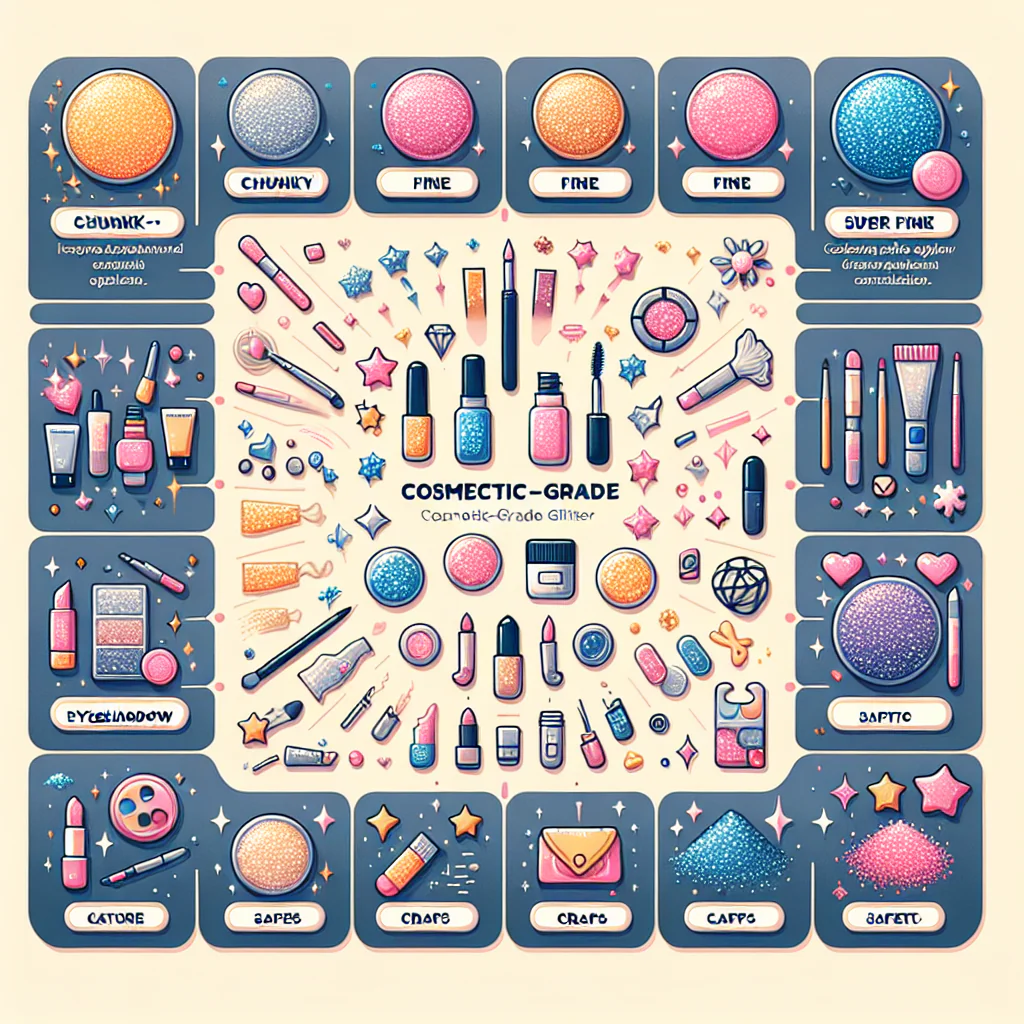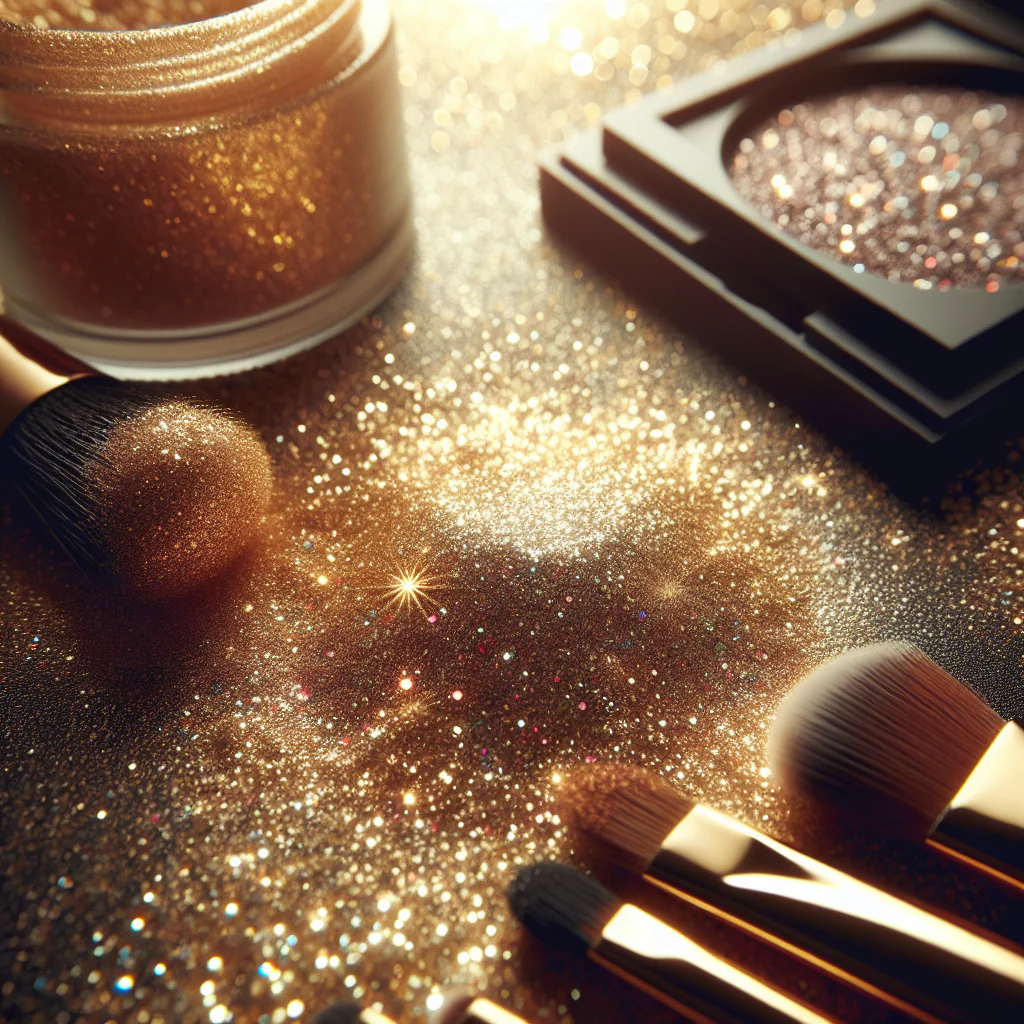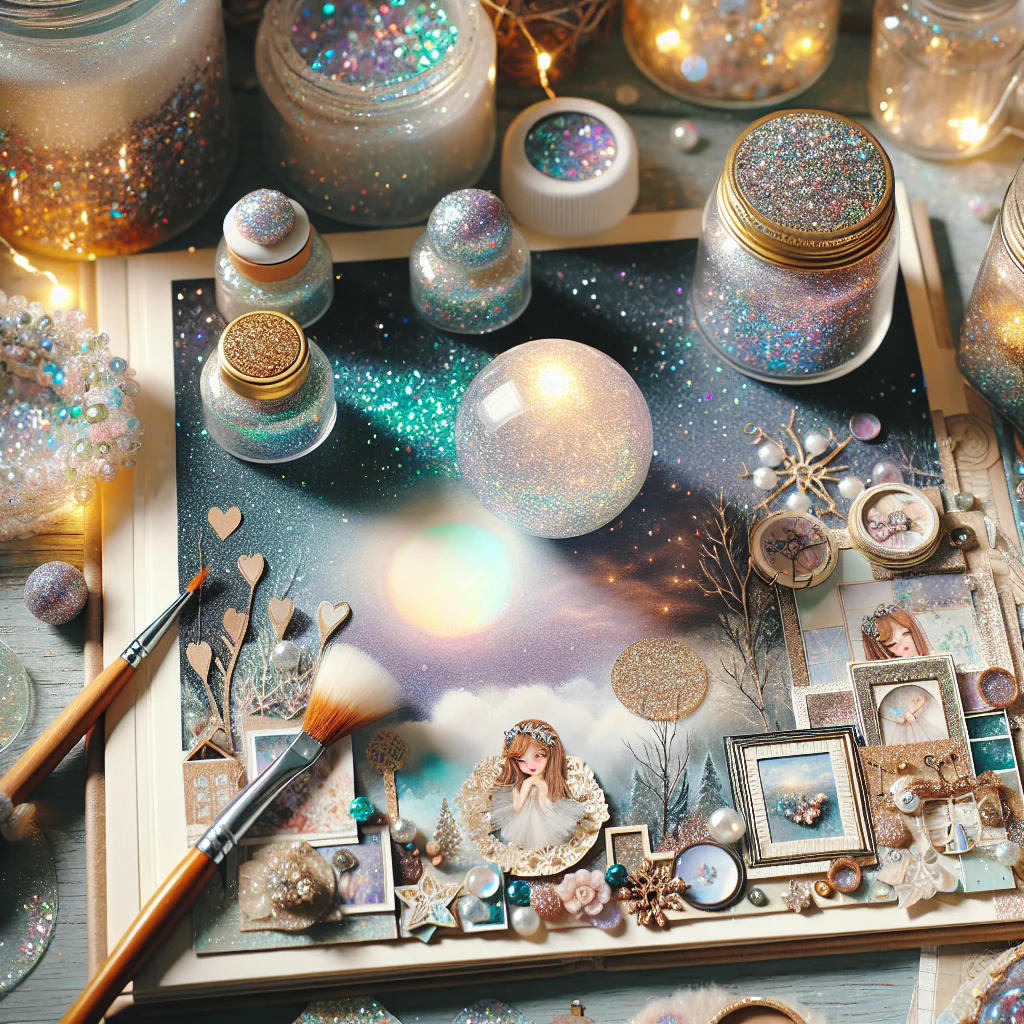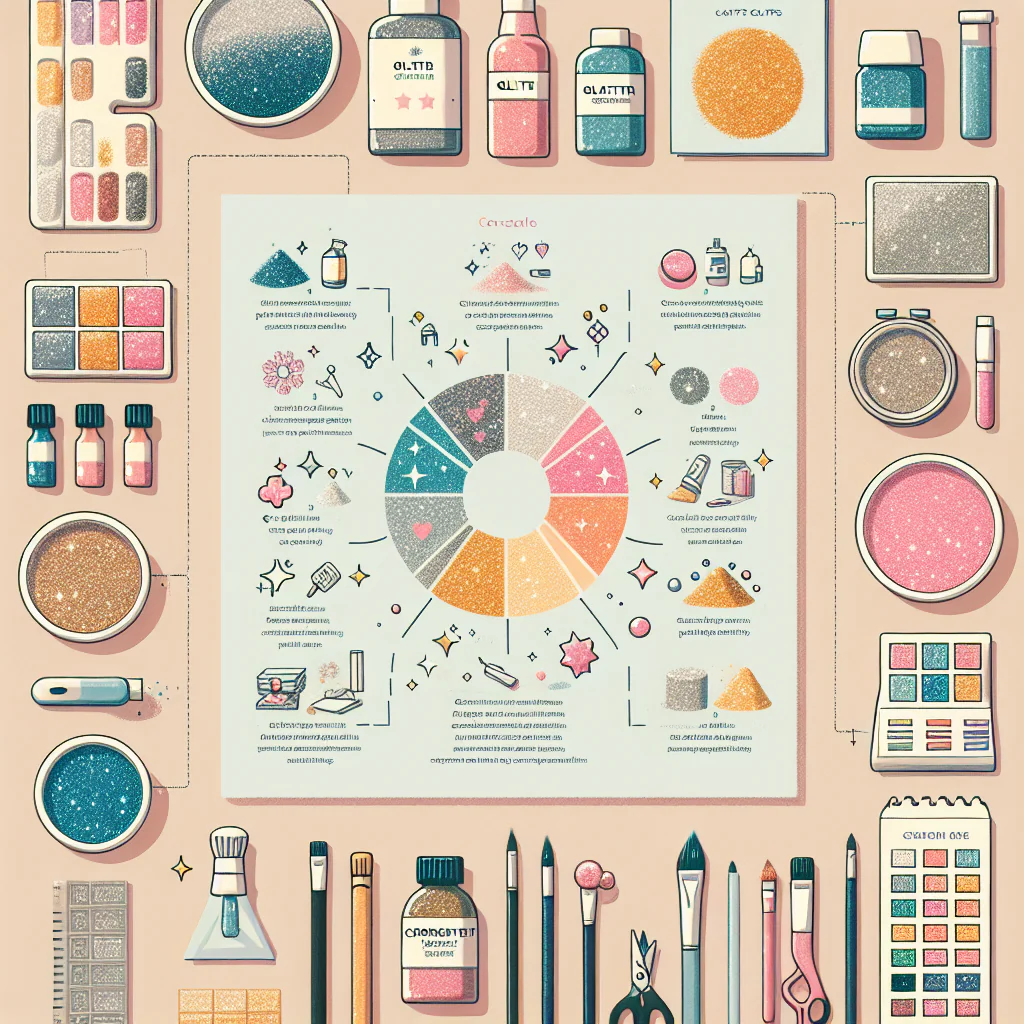-
Table of Contents
“Sparkle with confidence – everything you need to know about using cosmetic-grade glitter safely and stylishly.”
Introduction
Cosmetic-grade glitter has become increasingly popular in the beauty industry, with its ability to add a touch of sparkle and glamour to any makeup look. However, with the rise in popularity, there has also been a growing concern about the safety and types of glitter used in cosmetics. In this ultimate guide, we will delve into the world of cosmetic-grade glitter, discussing its safety, different types, and various uses in the beauty world. Whether you’re a makeup enthusiast or a professional in the industry, this guide will provide you with all the necessary information to make informed decisions when it comes to using glitter in your beauty routine.
Safety Precautions to Consider When Using Cosmetic-Grade Glitter
When it comes to adding some sparkle to your makeup routine, cosmetic-grade glitter is a popular choice. It can be used to create stunning eye looks, add some shimmer to your lips, or even give your body a glittery glow. However, before you start incorporating glitter into your beauty routine, it is important to understand the safety precautions that should be taken when using cosmetic-grade glitter.
First and foremost, it is crucial to only use glitter that is specifically labeled as “cosmetic-grade.” This means that the glitter has been tested and deemed safe for use on the skin. Glitter that is not labeled as cosmetic-grade may contain harsh chemicals or metals that can be harmful to your skin. Always check the label and make sure that the glitter is intended for use on the body.
Another important safety precaution to consider is the size of the glitter particles. Larger glitter particles can be more abrasive and may cause irritation or scratches on the skin. It is recommended to use smaller, finer glitter particles for cosmetic purposes. These are less likely to cause any irritation or damage to the skin.
In addition to the size of the glitter particles, the shape of the glitter should also be taken into consideration. Round or hexagonal-shaped glitter is generally safer for use on the skin compared to sharp or jagged shapes. This is because sharp edges can easily scratch or irritate the skin, leading to potential infections or allergic reactions.
When applying glitter to the face or body, it is important to use a gentle adhesive specifically designed for use on the skin. Do not use any harsh adhesives such as super glue or craft glue, as these can cause serious damage to the skin. Instead, opt for a cosmetic adhesive or glitter glue that is safe for use on the face and body.
It is also important to keep in mind that glitter should never be applied too close to the eyes. The eyes are a sensitive area and any irritation or damage caused by glitter can be extremely uncomfortable and potentially harmful. If you are using glitter near the eyes, make sure to use a gentle adhesive and avoid getting any glitter particles directly in the eyes.
When removing glitter from the skin, it is important to do so gently and carefully. Do not rub or scrub the glitter off, as this can cause irritation or scratches on the skin. Instead, use a gentle makeup remover or oil to dissolve the adhesive and gently wipe away the glitter.
In addition to these safety precautions, it is also important to be mindful of any allergies or sensitivities you may have. If you have a known allergy to certain ingredients, make sure to check the label of the glitter to ensure it does not contain those ingredients. It is always better to be safe than sorry when it comes to your skin’s health.
Lastly, it is important to properly store your glitter to maintain its safety and quality. Make sure to keep it in a cool, dry place away from direct sunlight. This will prevent any potential bacteria growth and maintain the integrity of the glitter.
In conclusion, cosmetic-grade glitter can be a fun and beautiful addition to your makeup routine, but it is important to take the necessary safety precautions when using it. Always use glitter that is specifically labeled as cosmetic-grade, avoid sharp or large glitter particles, use a gentle adhesive, and be mindful of any allergies or sensitivities. By following these safety precautions, you can enjoy the sparkle and shine of cosmetic-grade glitter without any worries.
Exploring the Different Types of Cosmetic-Grade Glitter and Their Uses

Cosmetic-grade glitter has become increasingly popular in the beauty industry, with its ability to add a touch of sparkle and glamour to any makeup look. However, with the rise in popularity, there has also been a growing concern about the safety and types of cosmetic-grade glitter available in the market. In this article, we will explore the different types of cosmetic-grade glitter and their uses, as well as address any safety concerns.
Firstly, it is important to understand that not all glitter is created equal. There are various types of glitter available, each with its own unique properties and uses. The most common types of cosmetic-grade glitter are polyester, polyethylene terephthalate (PET), and biodegradable glitter.
Polyester glitter is the most commonly used type of cosmetic-grade glitter. It is made from a plastic material and is known for its intense shine and durability. Polyester glitter is often used in eyeshadows, nail polish, and body glitter. However, it is important to note that polyester glitter is not biodegradable and can have a negative impact on the environment.
On the other hand, PET glitter is a more environmentally friendly option. It is made from a type of plastic that can be recycled, making it a more sustainable choice. PET glitter is also known for its intense shine and is often used in lip glosses, body lotions, and hair products. However, it is important to check the label and make sure that the PET glitter used is indeed biodegradable.
For those looking for a more eco-friendly option, biodegradable glitter is the way to go. It is made from plant-based materials such as eucalyptus cellulose and is completely biodegradable. Biodegradable glitter is often used in face and body paints, as well as in bath and body products. It is a great alternative for those who want to add some sparkle to their makeup routine without harming the environment.
Now that we have explored the different types of cosmetic-grade glitter, let’s take a look at their uses. As mentioned earlier, polyester glitter is commonly used in eyeshadows, nail polish, and body glitter. Its durability makes it perfect for long-lasting makeup looks, and its intense shine adds a touch of glamour to any product.
PET glitter, on the other hand, is often used in lip glosses, body lotions, and hair products. Its smaller particle size makes it easier to incorporate into these products, giving them a subtle yet eye-catching sparkle. PET glitter is also safe to use on the lips and skin, making it a popular choice for those who want to add some shimmer to their everyday makeup routine.
Biodegradable glitter is a versatile option that can be used in a variety of products. Its plant-based materials make it safe to use on the face and body, and it is often used in face and body paints, as well as in bath and body products. Biodegradable glitter is also a great option for those with sensitive skin, as it is less likely to cause irritation.
In conclusion, cosmetic-grade glitter comes in various types, each with its own unique properties and uses. Polyester glitter is known for its intense shine and durability, PET glitter is a more environmentally friendly option, and biodegradable glitter is the most eco-friendly choice. When using cosmetic-grade glitter, it is important to check the label and make sure it is safe for use on the desired area. With this ultimate guide to cosmetic-grade glitter, you can now confidently add some sparkle to your makeup routine while being mindful of the environment.
Creative Ways to Incorporate Cosmetic-Grade Glitter into Your Beauty Routine
Cosmetic-grade glitter has become increasingly popular in the beauty world, and for good reason. Not only does it add a touch of sparkle and glamour to any look, but it also comes in a variety of colors and sizes, making it a versatile addition to any makeup collection. However, with the rise in popularity of glitter, there has also been a growing concern about its safety and proper usage. In this article, we will delve into the world of cosmetic-grade glitter and explore creative ways to incorporate it into your beauty routine.
First and foremost, it is important to understand the difference between cosmetic-grade glitter and craft glitter. While both may look similar, they are made from different materials and have different purposes. Cosmetic-grade glitter is specifically designed for use on the skin and is made from non-toxic materials, making it safe for use on the face and body. On the other hand, craft glitter is made from metal or plastic and is not safe for use on the skin, as it can cause irritation and even cuts. Therefore, it is crucial to only use glitter that is labeled as “cosmetic-grade” for any beauty purposes.
Now that we have established the safety of cosmetic-grade glitter, let’s explore some creative ways to incorporate it into your beauty routine. One of the most popular uses of glitter is as an eyeshadow. You can add a touch of sparkle to your everyday makeup look by applying a small amount of glitter on the center of your eyelid or on the inner corners of your eyes. This will instantly brighten up your eyes and add a fun element to your makeup.
Another way to use glitter in your beauty routine is by mixing it with your favorite lip gloss or balm. This will give your lips a shimmery finish and make them stand out. You can also use glitter to create a statement lip by applying it on top of a bold lipstick. This will add a unique touch to your makeup look and make your lips the center of attention.
If you’re feeling adventurous, you can also use glitter to create a glitter eyeliner. Simply mix a small amount of glitter with a clear eyeliner or mixing medium and apply it along your lash line. This will give your eyes a bold and sparkly look, perfect for a night out or a special occasion.
For those who love to experiment with different nail looks, glitter is a must-have. You can mix glitter with clear nail polish to create a sparkly top coat or use it to create a glitter ombre effect on your nails. You can also use glitter to create intricate designs on your nails, making them stand out and adding a touch of glamour to your manicure.
Aside from makeup, glitter can also be used in skincare. Many cosmetic-grade glitters are made from natural ingredients such as mica, which has skin benefits such as reducing inflammation and improving skin texture. You can mix a small amount of glitter with your favorite moisturizer or body lotion to give your skin a subtle glow. However, it is important to note that glitter should not be used as a substitute for skincare products and should only be used in moderation.
In conclusion, cosmetic-grade glitter is a fun and versatile addition to any beauty routine. From adding a touch of sparkle to your makeup looks to incorporating it into your skincare routine, there are endless ways to use glitter in your beauty routine. Just remember to always use cosmetic-grade glitter and to patch test before applying it to your face or body. With these tips in mind, you can now confidently incorporate glitter into your beauty routine and shine like the star you are.
Q&A
1) What is cosmetic-grade glitter?
Cosmetic-grade glitter is a type of glitter that is specifically designed and tested for use in cosmetics and beauty products. It is made from non-toxic materials and is safe for use on the skin.
2) What are the different types of cosmetic-grade glitter?
There are several types of cosmetic-grade glitter, including polyester glitter, mica glitter, and biodegradable glitter. Each type has its own unique properties and uses in cosmetics.
3) Is cosmetic-grade glitter safe to use on the skin?
Yes, cosmetic-grade glitter is generally considered safe for use on the skin. However, it is important to make sure that the glitter is specifically labeled as cosmetic-grade and to follow proper application techniques to avoid any potential irritation or allergic reactions.
Conclusion
In conclusion, the Ultimate Guide to Cosmetic-Grade Glitter provides valuable information on the safety, types, and uses of glitter in cosmetics. It emphasizes the importance of using only cosmetic-grade glitter to ensure the safety of consumers and the environment. The guide also highlights the various types of glitter available and their specific uses in different cosmetic products. By following this guide, consumers can make informed decisions when purchasing and using glitter in their beauty routines. It is essential to prioritize safety and choose high-quality cosmetic-grade glitter for a fun and safe glitter experience.








